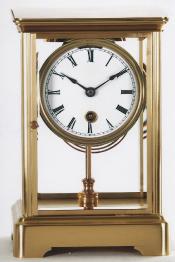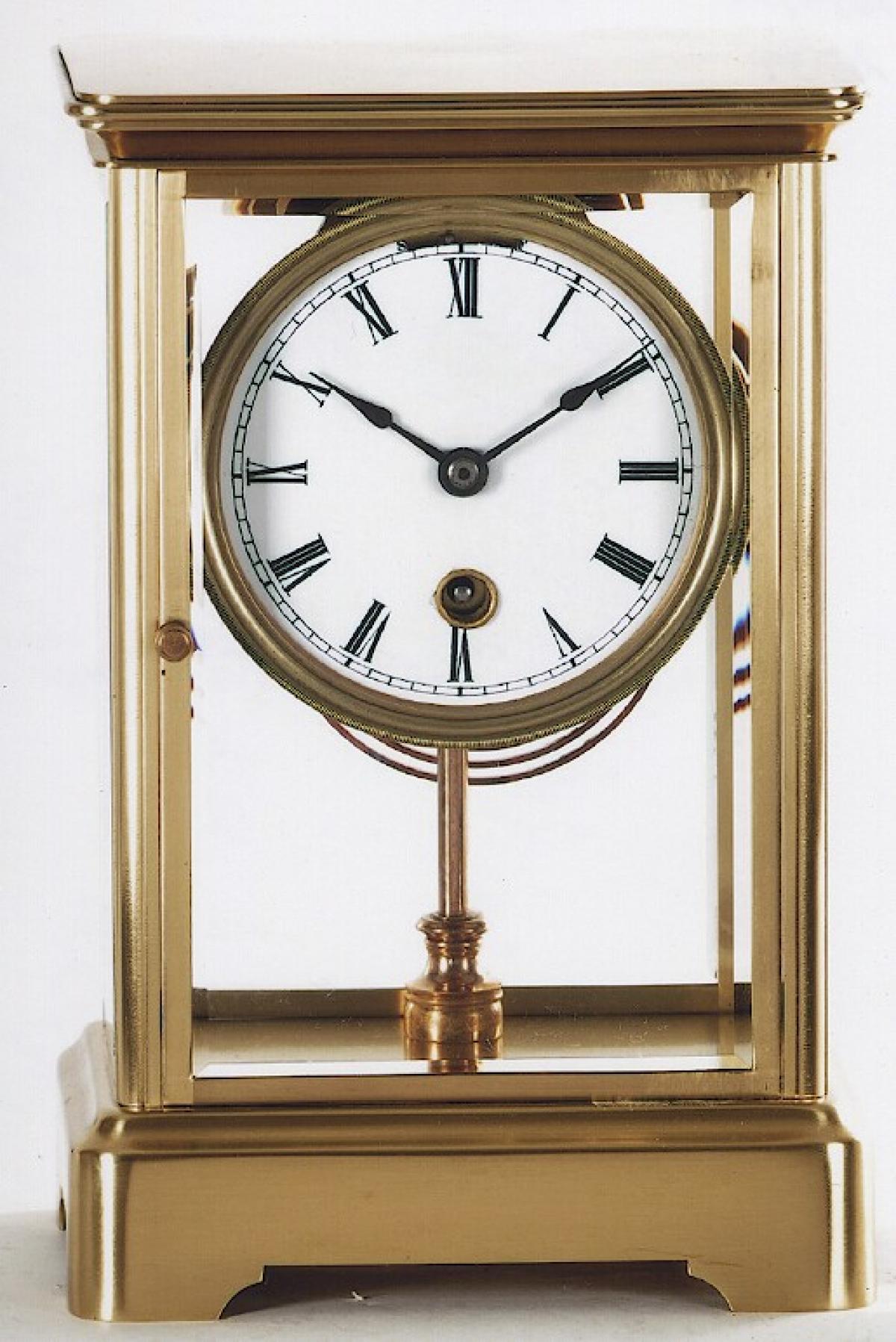Boston Clock Company of Boston, Massachusetts. Crystal regulator mantel clock. 213139.
This is an American-made Crystal Regulator that was manufactured circa 1890. The case is framed in brass, and this fine example retains nearly all of its original gold-plated finish. This treatment is in very good condition. There are a couple of minor areas of loss. All four sides of this case are fitted with beveled glass panels. The front and back of this case are doors that provide access to the interior of the case, the dial, and movement. The movement is high quality. It is a seven-jeweled movement. The pinions are cut with precision from solid steel and are highly polished. The plates are gilded. The works are a tandem wind design. This means that one inserts the winding key onto the single winding arbor located in the front of the dial. Turn the key to the right in order to wind the time train. Turn the same key to the left, and you are now winding the strike train. This clock strikes the hour and the half-hour on a wire gong that is mounted on a stand that is secured to the bottom of the case. The strike train features a rack and snail design which can be easily viewed on the back of the clock. Note that this clock does not have a pendulum. This movement is fitted with a balance wheel. The balance wheel is designed with temperature compensation. This clock will start quickly when wound and can be handled or moved without fear of stopping the clock. The balance wheel escapement is also very quiet. The ticking of which should not disturb the most sensitive of sleepers. The dial is porcelain and in excellent condition. It is a classic design displaying Roman-style hour numerals.
This case measures approximately 9.75 inches tall, 6.5 inches wide, and 5.25 inches deep. This clock was made circa 1890.
Inventory number 213139.
The Boston Clock Company was organized by Joseph H. Eastman, James Gerry, and others on May 29, 1884. It was actually located in Chelsea, Mass. This company was formed as the successor to Joseph H. Eastman's Harvard Clock Company 1880-1884. Joseph H. Eastman became the manager of this new firm. This company failed in 1895, and in March of the same year, Joseph Eastman and others tried to revive it as the Eastman Clock Company. This new firm lasted only one year and eventually became the Chelsea Clock Co. in 1897.
The Boston Clock Company manufactured clocks predominately in the style of various crystal regulators, carriage clocks, and other mantel clocks in marble cases. These clocks often featured a compensating balance wheel spring-powered movement. A small number of weight-driven wall clocks were also produced. Most of which were similar in form to the Howard model No., 5 & No., 70 and the Chelsea No., 1.
Boston Clock Company clocks were sold through salesrooms that included Smith & Patterson in Boston, G. S. Lovell & Co in Philadelphia and Wm. H. Atwater in New York.




